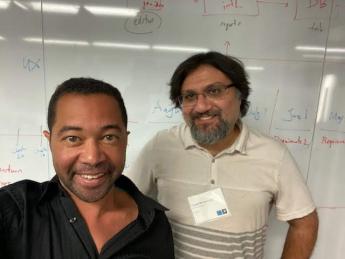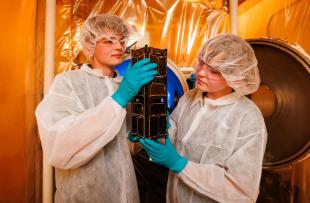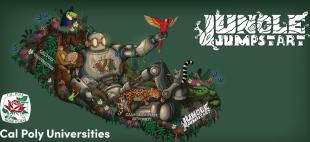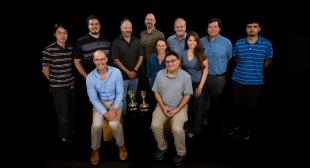Cal Poly and the University of Miami Team Up to Help Newspapers — Using AI

A $200,000 grant from the John S. and James L. Knight Foundation is helping the Cal Poly Institute for Advanced Technology and Public Policy develop an artificial intelligence system that will strengthen news coverage of state and local governments.
Researchers aim to build a prototype news wire service — called AI For Reporters — in which narrative content covering state legislatures is automatically generated from primary data sources and can be distributed to local and regional news organizations for publication.
The ambition is to empower hometown media to receive articles specifically covering the activities of their state representatives and issues of local/regional significance they currently lack because of limited reporting resources and/or being overlooked by traditional wire services.
“An informed citizenry is crucial to a healthy democracy, but the public is rapidly losing access to this type of information,” said Foaad Khosmood, primary investigator on the grant and a senior research fellow at the institute. “Our approach is to use semi-structured primary source data from state legislative proceedings in California and Florida to automatically generate quality, relevant and factual news content as a service to local news organizations.”
AI For Reporters is a multi-institutional collaboration between Cal Poly and the University of Miami’s School of Communications. Other strategic partners include Austria’s Graz University of Technology Institute of Interactive Systems and Data Science (ISDS) and Google.
“This project represents an unprecedented partnership between the engineering strength of Cal Poly and the journalism prowess of the University of Miami for the benefit of supporting state-level journalism,” added Lindsay Grace, Knight Chair at University of Miami and co-PI on the project.
The collaboration comes at a time when statehouse reporting is at an all-time low. According to a report by PEW Research Center, full-time newspaper newsroom staffing declined by 30% between 2003 through 2012, and less than one-third of U.S. newspapers assign any reporters — full- or part-time — to statehouses. The result is that the media — the primary entity the public relies on to monitor and report important issues — is no longer able to effectively serve this important function.
As the watchdog function of the press is diminished, so too is the ability of a well-informed public to engage with and impact the decision-making process and outcomes of their government, researchers said.
The project is partnering with newsrooms to test and verify the solution.
“Among the exciting changes in media today are the new tools and technologies available for creative and compelling stories,” said David Lesher, editor and co-founder of CalMatters, a nonprofit, multimedia news organization based in Sacramento. “AI, in the hands of an experienced, independent journalist, can broaden a reporter’s sources for information and make stories more relevant to a specific audience.”
Paul Cheung, Knight Foundation director for journalism and technology innovation, said changes in the industry have resulted in fewer newspapers, news holes and reporters.
“Many local news organizations no longer have the necessary resources to cover state legislative hearings, press conferences and other state and municipal government proceedings,” said Cheung, whose Miami-based Knight Foundation is dedicated to fostering “informed and engaged communities” it believes are “essential for a healthy democracy."
“This collaboration will explore the viability of using AI as an alternative reporting tool for local news organizations to enhance coverage.”




